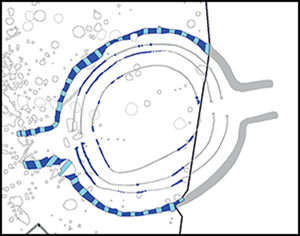Article contents
Neolithic rondels in Central Europe and their builders: an analysis of multi-rondel sites
Published online by Cambridge University Press: 16 June 2022
Abstract

Monumental enclosures are a widespread phenomenon of the European Neolithic. One category of enclosure is the mid-fifth-millennium BC rondel sites of Central Europe. In parts of this region, rondel sites are grouped, drawing attention to notable differences in individual rondel forms. Here, we use Bayesian modelling of radiocarbon dates from the ditches of two rondels at Praha-Krč, Bohemia, to demonstrate their contemporaneity. In turn, this informs interpretations of the role played by multi-rondel sites in symbolic competition between regional communities, who invested in rondels as part of translocal negotiation. The concept of translocality may prove fruitful for the investigation of the monumental architecture of other periods and regions.
Keywords
- Type
- Research Article
- Information
- Copyright
- Copyright © The Author(s), 2022. Published by Cambridge University Press on behalf of Antiquity Publications Ltd.
References
- 4
- Cited by




